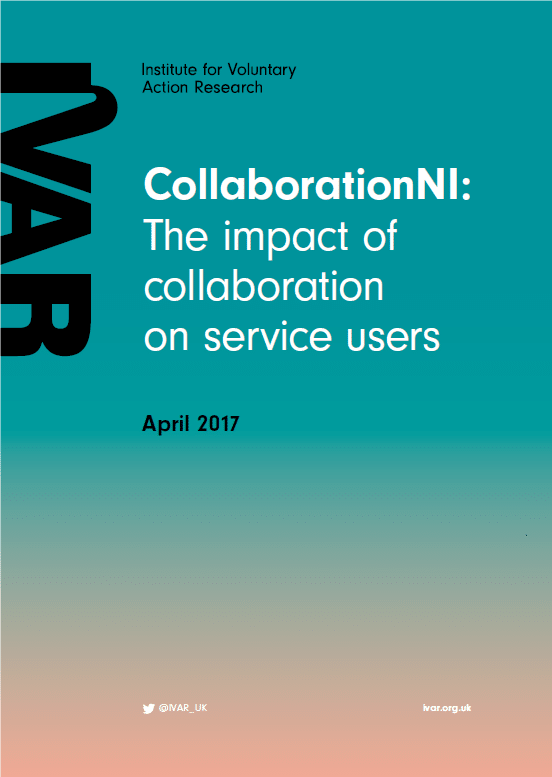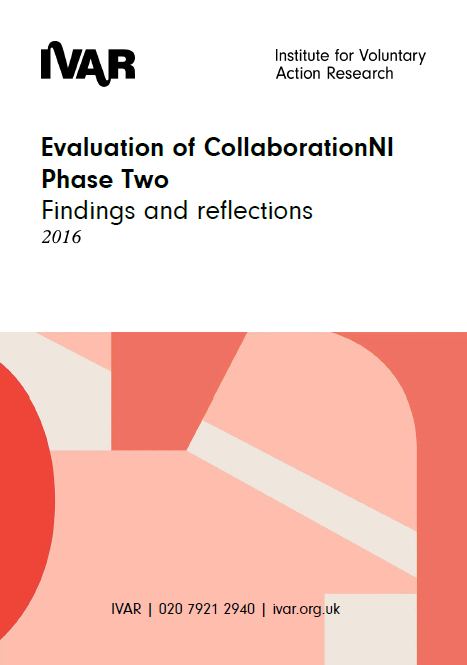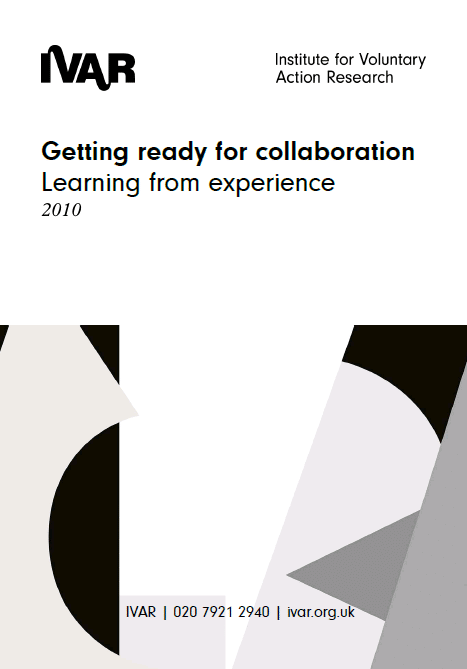
Collaboration
Harnessing the power of collaboration and partnerships.
While collaboration is a central feature of organisational life, it does come with challenges – both practical and emotional.
We have been facilitating collaboration since IVAR was founded in 2000 – between groups of charities or funders, and across sectors. We have helped organisations to walk away from collaborations that aren’t delivering value, and we have seen collaborations exceed all our expectations in the benefits they have brought to communities, children and families.
We hope that what we have learned, summarised below, serves you well in your own collaborative endeavours.
Where to start
Common questions
Why should we collaborate?
- Deliver better outcomes for beneficiaries (e.g. through cross-referral).
- Respond to the policy environment – many public agencies and foundations see collaboration as a means of achieving greater efficiency, effectiveness and impact.
- Achieve financial security.
- Share staff, resources and/or space.
- Influence policy (a stronger voice together).
What makes it hard?
- Developing a shared vision.
- Selecting the right structure.
- Starting early to think about what success might look like, and what evidence you may need to collect.
- Giving someone the authority to invest time and champion collaboration.
What helps?
- Developing a shared understanding of purpose.
- Balancing individual and collective interest.
- Developing appropriate leadership and governance structures.
- Securing resources and capacity for collaboration.
What will sustain collaboration in the long-run?
- Developing a shared vision.
- A dual focus on doing things together, and maintaining the relationships that underpin joint action.
- Meaningful buy-in from senior leaders, to encourage staff to take the time required to build relationships and explore opportunities.
- Regular review points – partnership working is hard and can feel messy, give yourself time and permission to step back and review, reflect and adapt together.
- Creating a safe space for people to express how they feel.
Helpful ideas from academic literature
Few people have time to read and digest academic literature – but a clear concept or idea can steady, reassure and guide an organisation that is trying something new. Here are a few that, over the years, we have used again and again.
Collaboration management
The management of collaboration requires a distinctive set of specialist competencies. These include: the ability to discern how organisations interact with their environments and stakeholders; the willingness to see collaboration as a long-term developmental process rather than a one-off task; the recognition of the emotional elements involved in the process; and the skill to act as an intermediary and build trust across organisational boundaries.
Exchange
The collaboration process can move more smoothly when parties are able to visualise the process as a form of ‘exchange’, in which all parties need to give up some cherished beliefs and practices in order to gain the benefits they seek for their clients and organisations in the longer term. This was particularly the case where study participants saw themselves as engaged in a struggle for supremacy: progress was often made when the process was re-framed as being more of an exchange which could yield benefits to all parties, irrespective of sector or organisational size.
Collaborative advantage
Because the practical challenges of collaboration can be formidable, and the process can extend over a long time period, the management of collaboration involves motivating paid staff, volunteers, trustees and other stakeholders to make special efforts to contribute positively to the enactment and embedding of change. This is especially the case where there is a strong sense of loss among some stakeholders or a lack of understanding of the compensatory benefits that might accrue from collaboration. It follows that it can be helpful if the potential collaborative advantage is clearly articulated to all stakeholders at an early stage of a collaborative process. Those whose full cooperation is required to enact and sustain organisational change need to be able to see the added value for themselves and others which can result from cooperation and the abandonment or modification of former working norms and cultures.
Selecting the right structure
Collaboration can take different forms. Which structure is best suited to your needs?
- Informal alliance: Based on good relationships and understanding, may be written but not contractual.
- Contract-based alliance: A relationship underpinned by contract – sets out objectives, respective roles, cost-sharing and charging arrangements.
- Joint venture: Parties establish a legal entity which they jointly own and control, for the purpose of undertaking specified functions.
- Group structure: Parties agree to be controlled by a holding entity, which owns or controls the parties (subsidiaries can keep original identity).
- Merger: Parties merge on whatever basis is agreed, creating a new entity (relative equality between parties) or by enlarging an existing entity (a takeover).

Working across sectors
We’ve been facilitating cross-sector partnerships to develop practical responses to local issues for over 15 years – most recently through Building Health Partnerships and Transforming Healthcare Together.
We have enabled groups to reach their most isolated and vulnerable community members, ensuring that services meet local needs.
How the health sector worked in partnership during Covid-19
From March 2020, health and care practitioners accelerated progress with partnership working across the health system. Previous barriers – such as information governance, organisational boundaries or agendas, and lack of trust – were removed, or set aside, in order to respond swiftly to a ‘tsunami of need’. Partnerships across the country reached the most isolated and vulnerable community members, protected against overwhelming demand on statutory health services, and improved referral pathways and access to services.
What we learned about cross-sector working
A range of factors contributed to improvements in partnership working across the health system, including:
- Having a common purpose
- Sharing a sense of urgency
- Recognition and appreciation of each other’s strengths
- Involvement of the voluntary sector from day one
- Removing bureaucracy and hierarchy where appropriate
- Communication and dialogue
- Sharing and collating data and intelligence
- The agility of the voluntary sector and the introduction of more flexible funding models
Where to start if you are considering how to support people and communities
- Start a conversation: Whether you are based in the NHS, a local authority or a charity – reach out and talk to your counterparts in other sectors. Avoid using acronyms and jargon, or invite people to ask about any terms you use that they haven’t heard before.
- Share data: Many charities and social enterprises have significant experience and skill in supporting vulnerable people; and they can make a huge difference. However, they can’t help if they don’t know where to target their support. Find ways to connect organisations with patients who are shielding or who have complex needs.
- Streamline processes: Notice things that are onerous or unnecessary – you may still need to ask all the same questions, but could a ten-step process become a four-step process? Are different organisations in your area asking for the same information? Take any steps you can to make things quicker and easier for people.
Practical things NHS and other statutory partners can do to enable partnership working
- Open up training programmes (e.g. safeguarding and governance) to everyone delivering health services.
- Embed partnership working into refreshed Primary and Community Care strategies.
- Recognise that there is a cost associated with coordination, and appropriately resource key players for this.
- Work with middle managers to secure buy-in for partnership working.
- Avoid over-reliance on individual relationships, which can be put at risk due to staff turnover.
- Resist the pull to return to increasingly formalised, bureaucratic structures.
- Discuss and agree your attitude to risk – are you open to exploring innovative solutions?
Sustaining partnerships
We have gathered some questions that are front of mind for system leaders, which may help new partnerships to establish a common purpose, and existing partnerships to consider how they might develop and/or where to next direct their attention:
- What will enable people to continue concentrating on the individuals and communities they are serving, more than their organisations?
- What is on the horizon that needs to be tackled together?
- What does it mean, and what will it take, for charities to be recognised as ‘strategic partners’?
- How can the voices of the smallest groups in the community be represented?
- How can existing hierarchies and structures work better to enable people to behave in an agile and responsive way?
- How can we support people who don’t have access to the internet?



